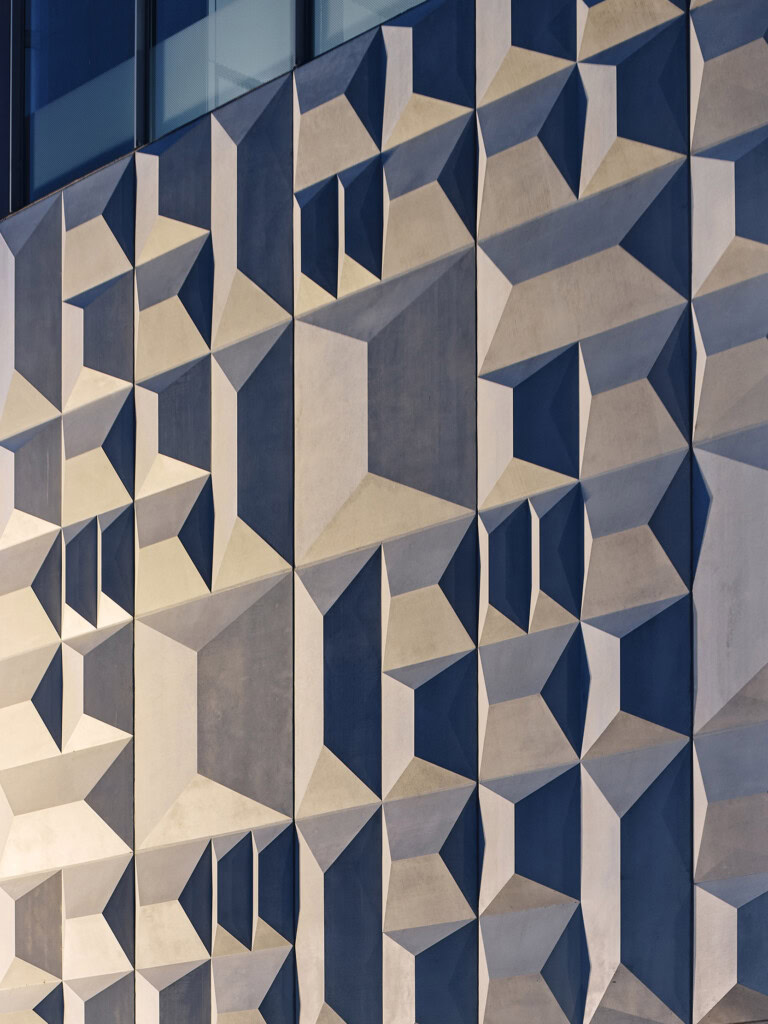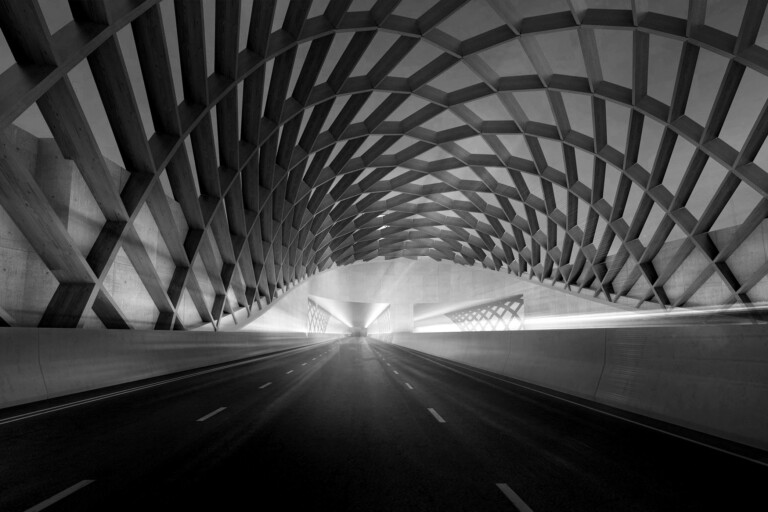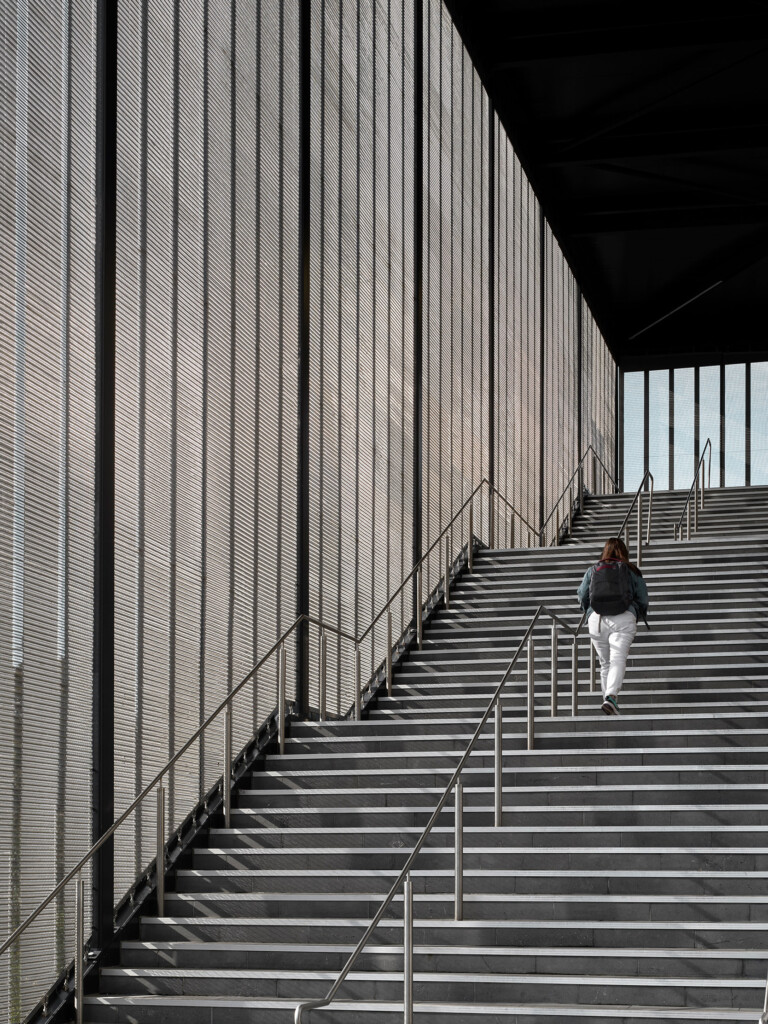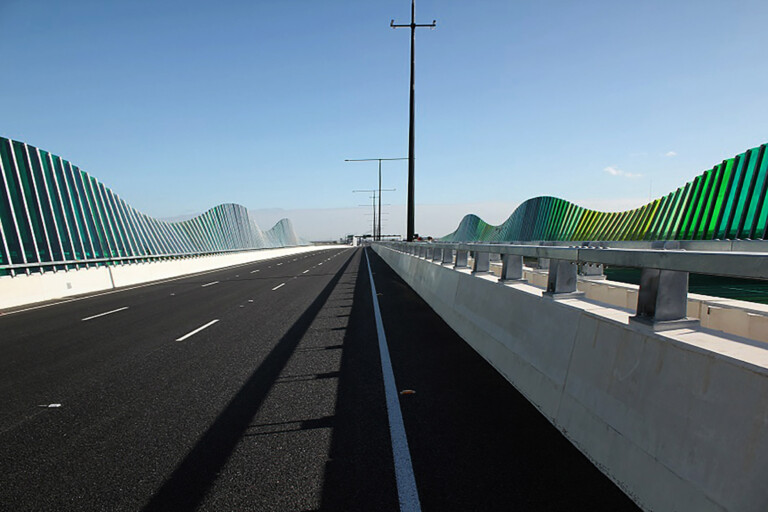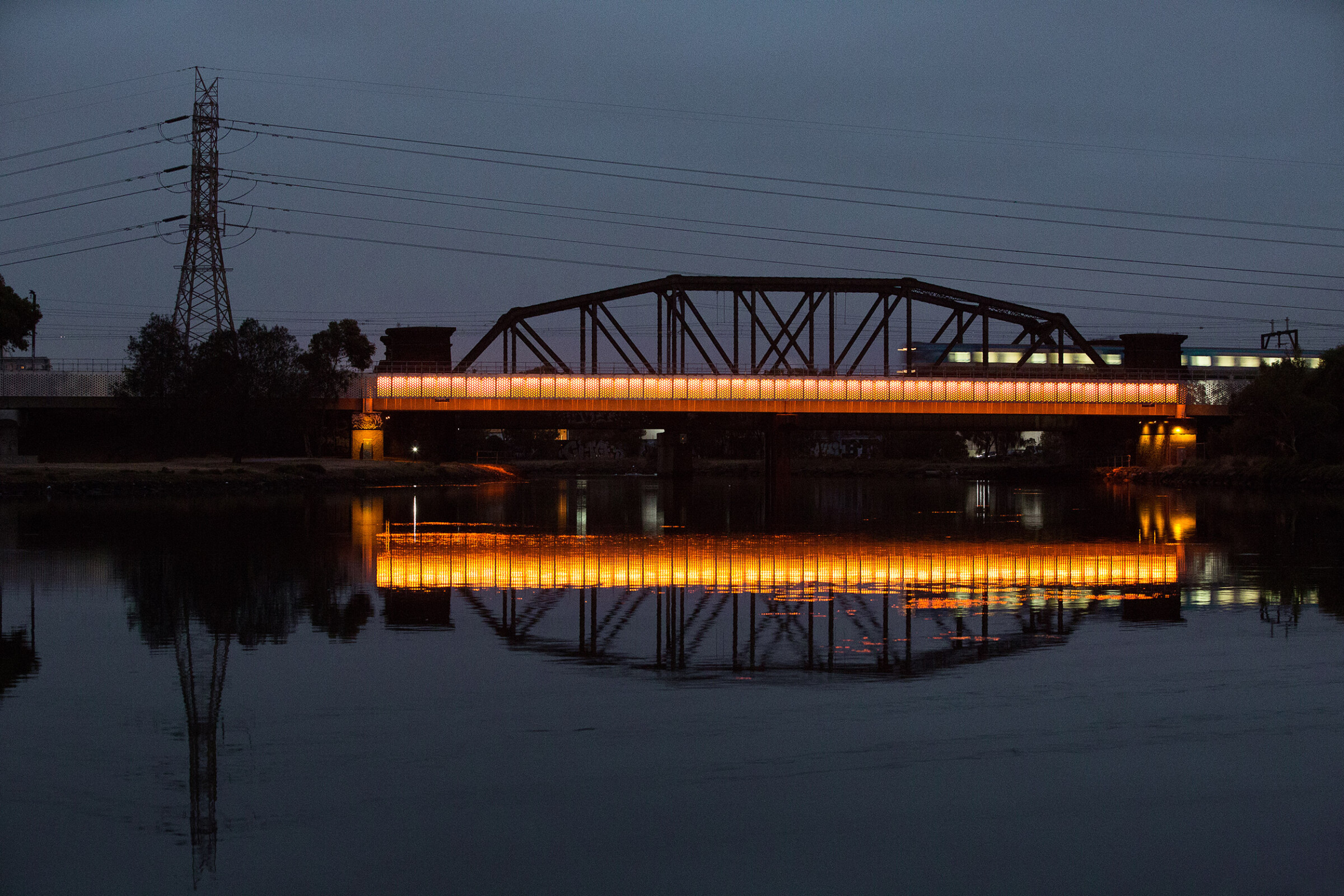
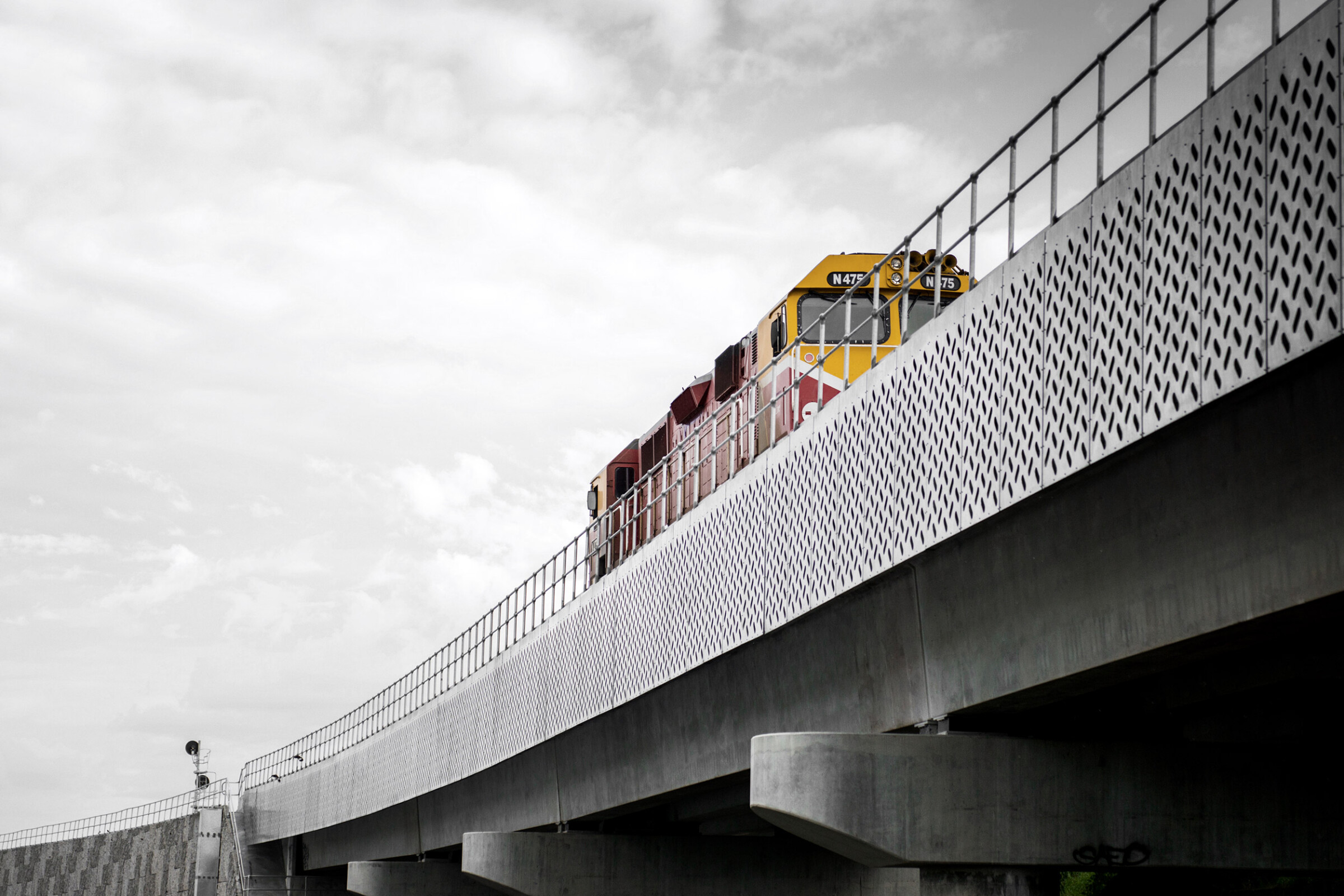
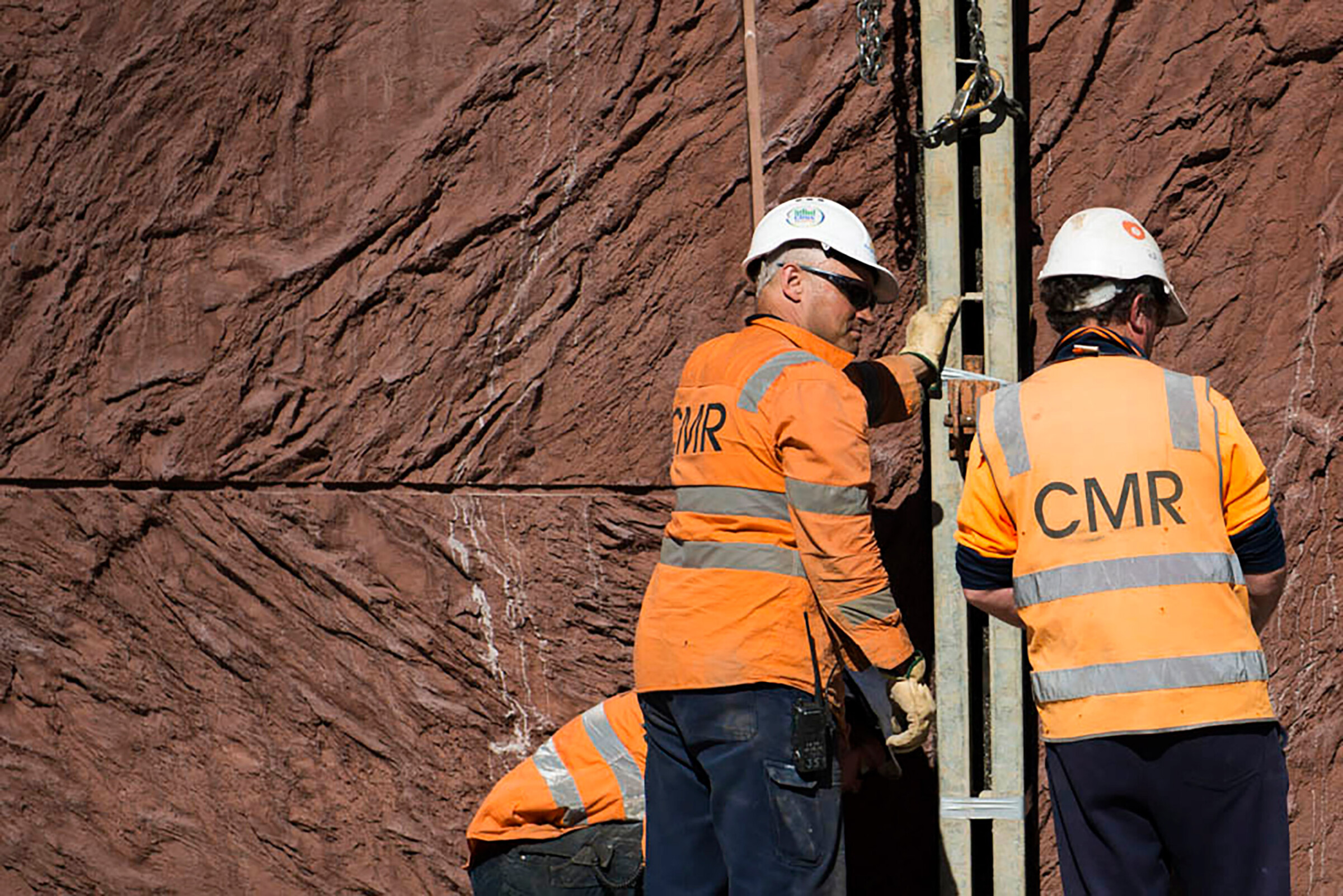
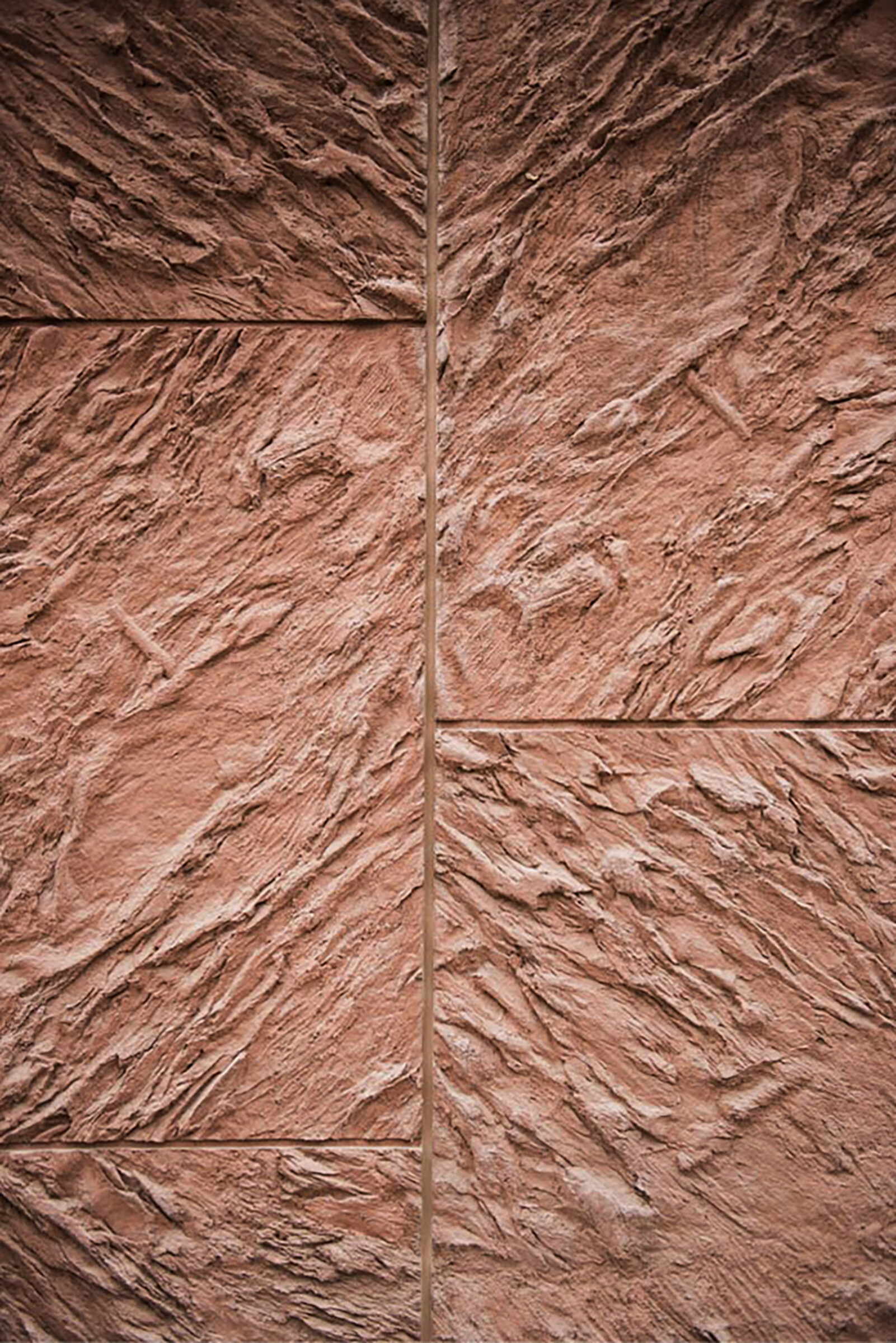
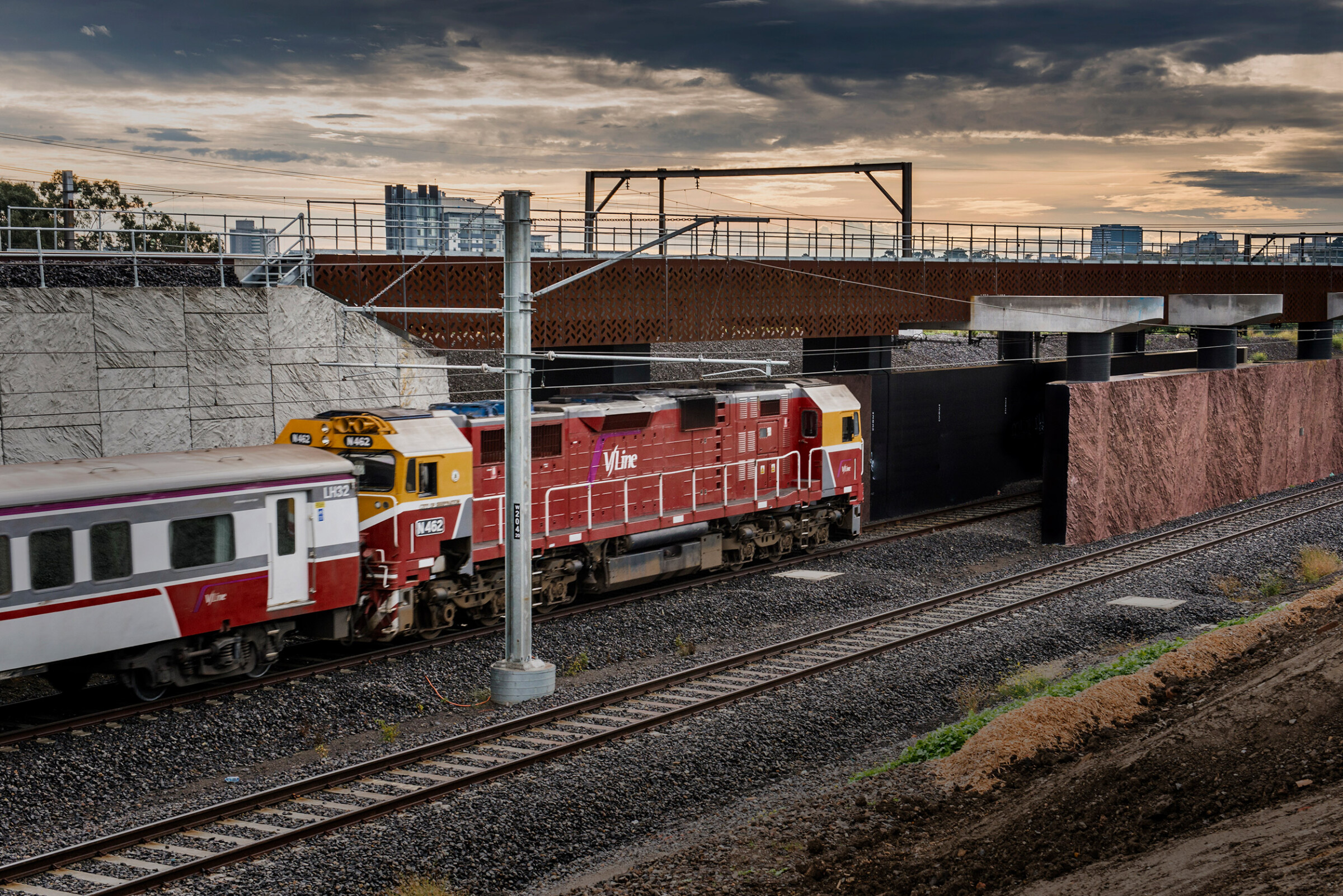
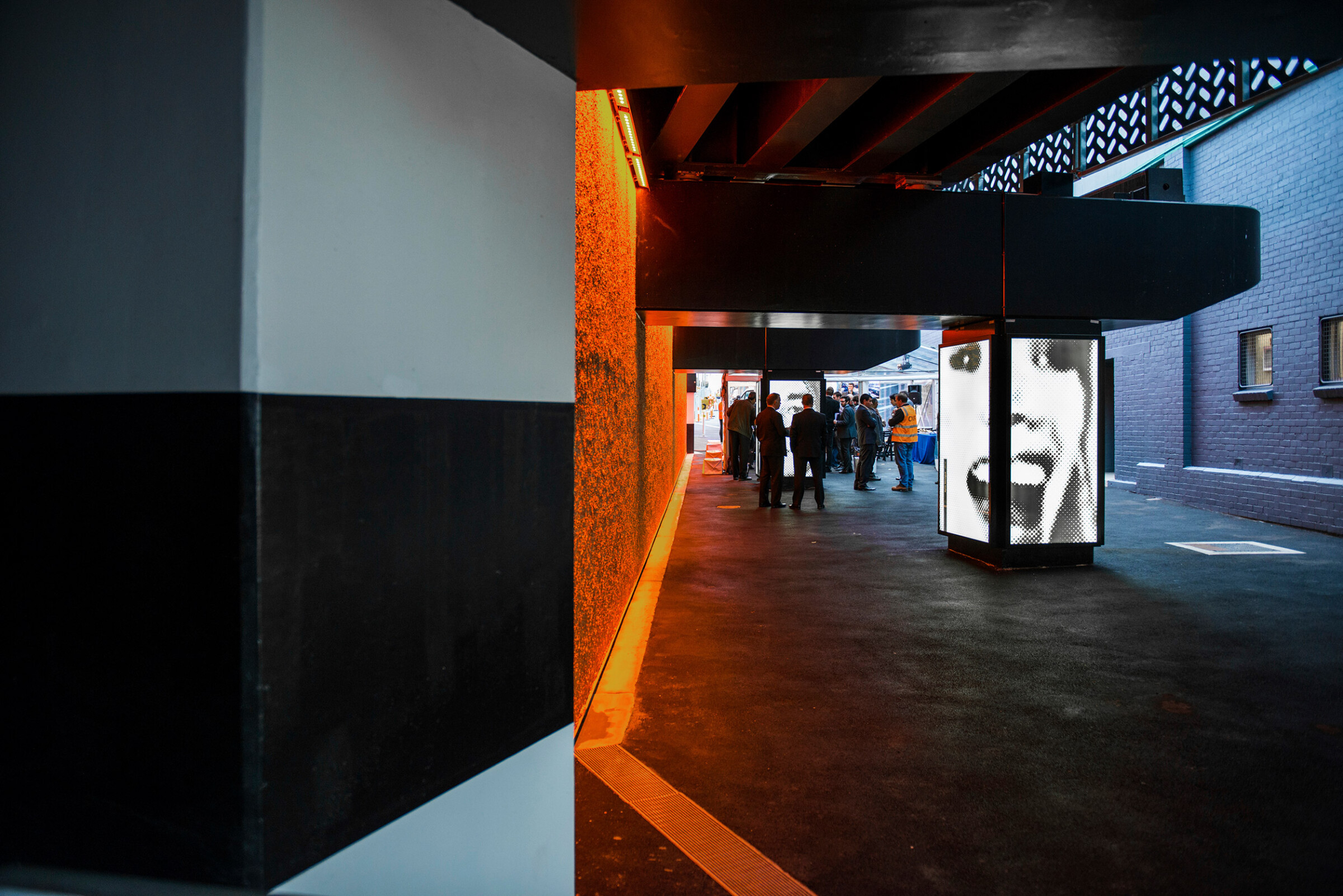
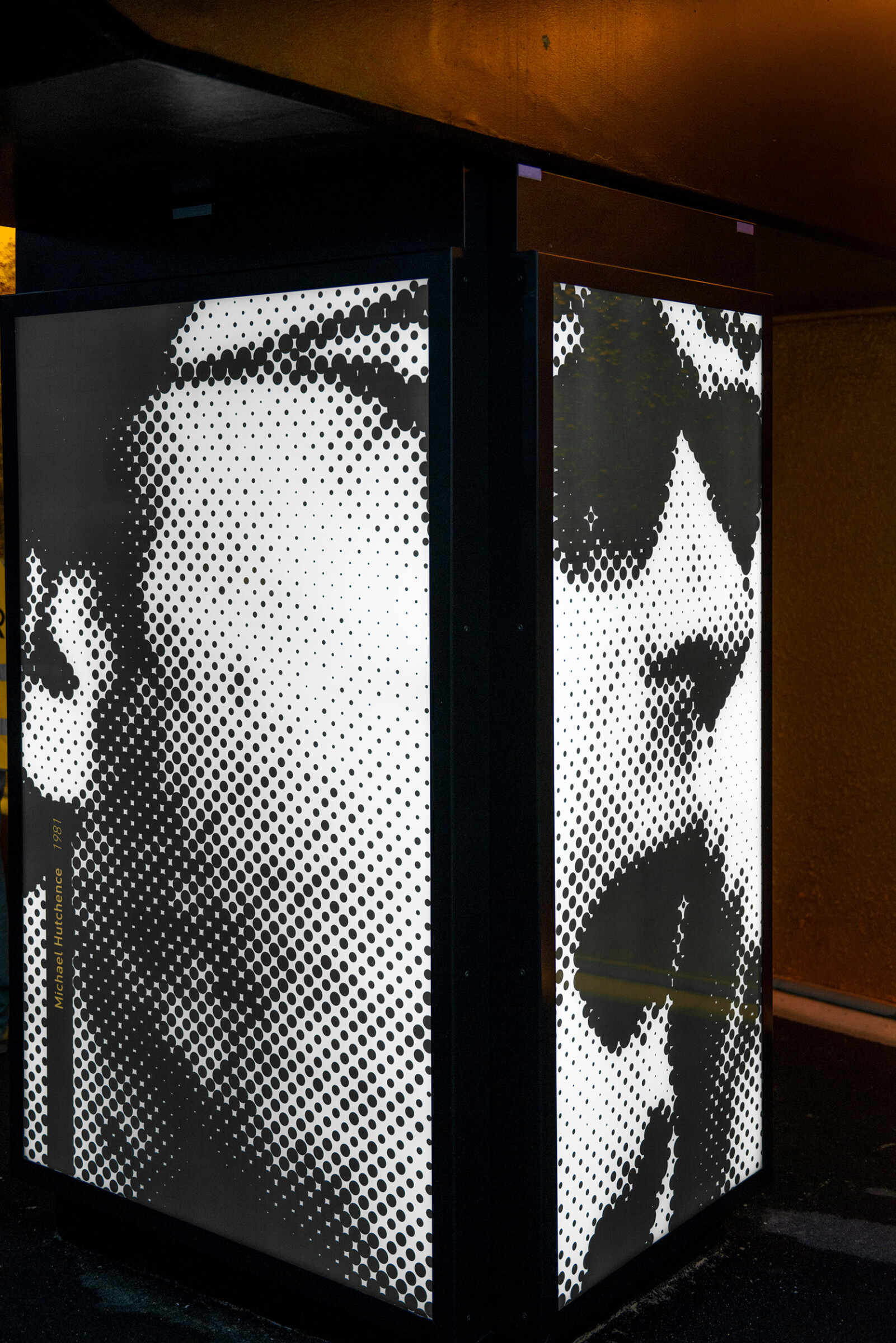
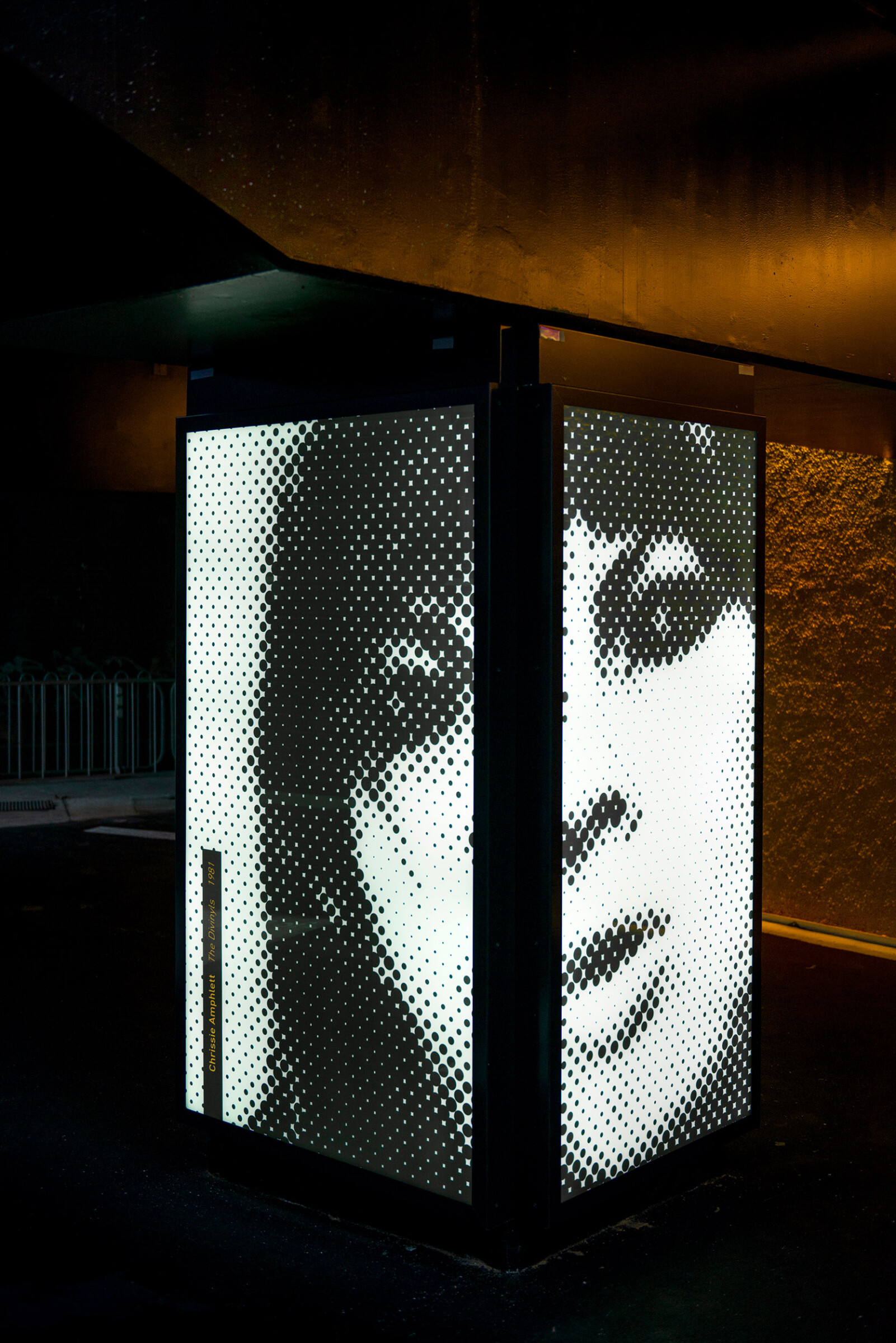
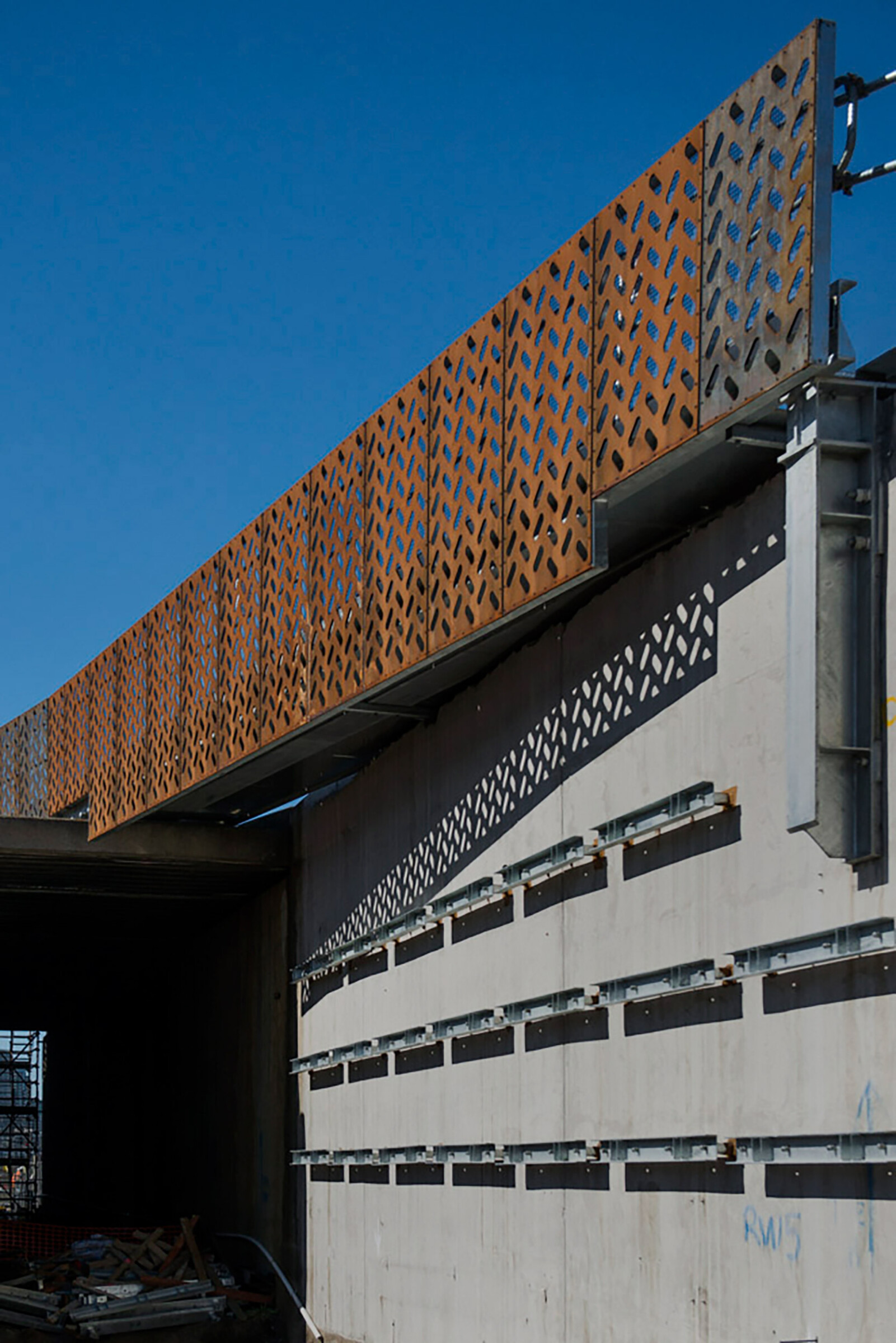
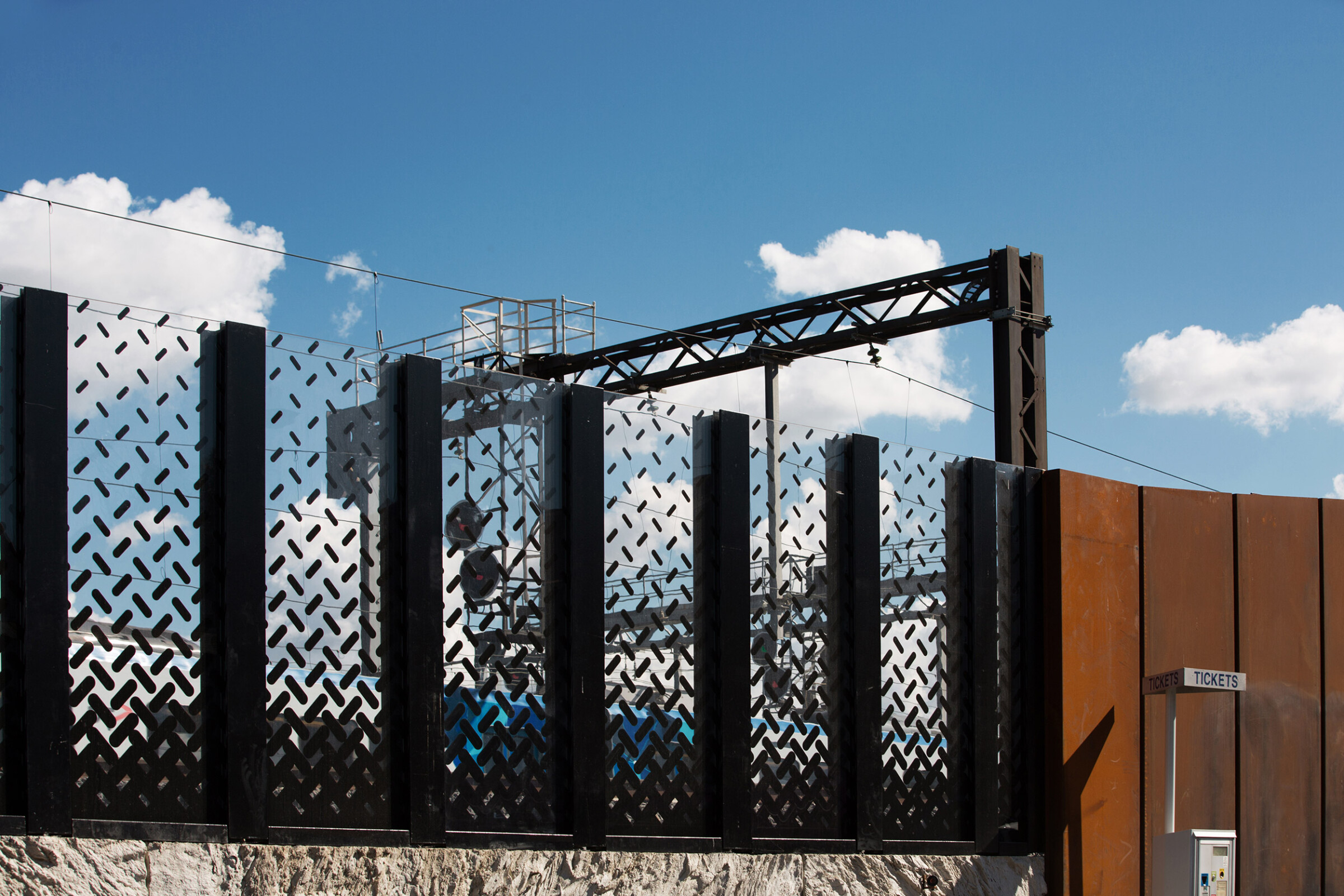
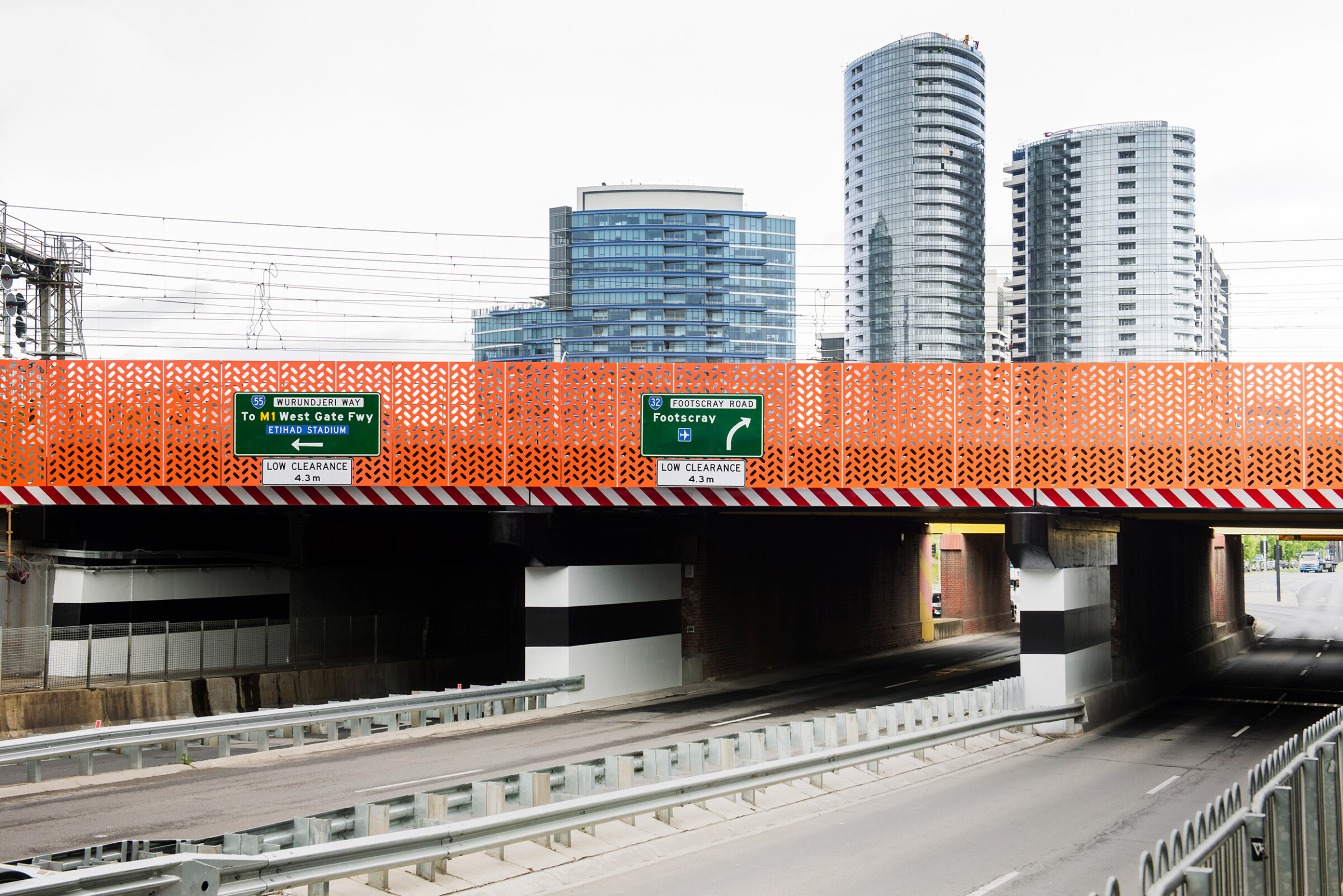
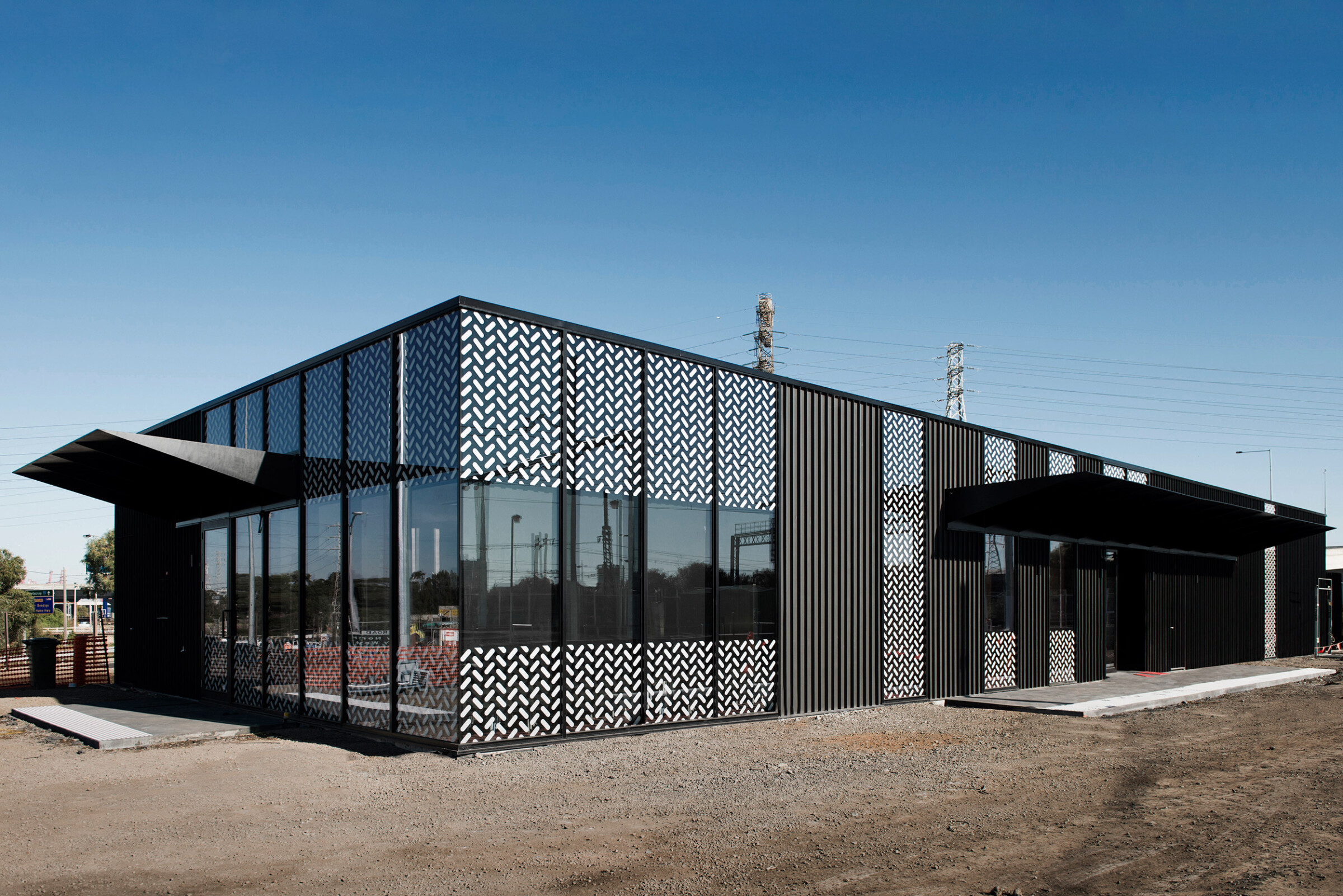
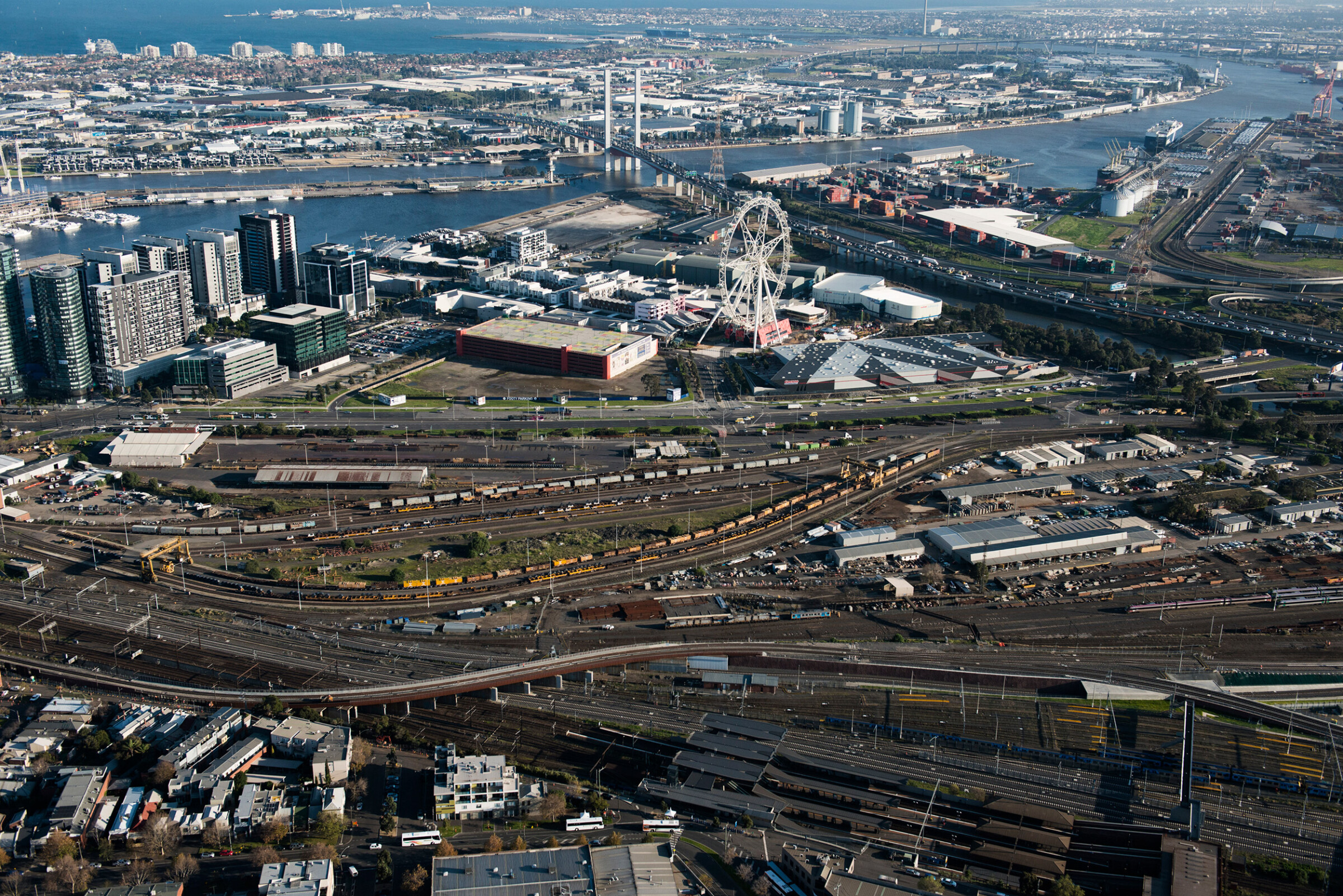
Regional Rail Link, Package B
The Regional Rail Link project separates metropolitan and regional trains to improve the efficiency of Melbourne’s train network. Wood Marsh was part of the Alliance team for the ‘City to Maribyrnong River’ section (Work Package B). The Urban Design component of RRLCMR has involved the design of various elements including new bridges, retaining walls, a noise wall, and an amenities building.
The conceptual framework was developed in response to the existing context and client priorities. The rail corridor is complex in terms of its layering of tracks, services and structures. New structures and upgrades to existing assets presented an opportunity to develop an integrated and recognisable design language to unify built form along the corridor.
The design language is a combination of two principles. The first is the reference to rail iconography. As the new structural insertions are intermingled with historic structures along the corridor, architecturally this was as an opportunity to reference the richness and craft of 19th century rail infrastructure. The second principle is materiality. While material selection and detailing are in part informed by the first principle, it was also driven by the local urban character and landscape adjacent to the corridor.
The material palette is robust, textured and predominantly monochromatic with highlight colours chosen to create brief moments of contrast. The patterning of perforated screens to bridges recalls the riveted texture of the Maribyrnong River Bridge steelwork, while rock textured precast panels in grey and dark terracotta celebrate the unique qualities of the western plains environment along RRL, with its characteristics of low rainfall, basalt plains and gently undulating landscape. Corten steel elements pay tribute to the slightly Dickensian nature of the corridor, while highlights of vivid orange recall the drama of a passing train at night.
The adaptable nature of the design language allows for a range of complex engineered structures to be distilled into clear sculptural forms. Sweeping embankments give way to the slender and tactile stripes of cladding running through the landscape, while curved and chamfered ends to bridge crossheads reduce concrete bulk, lightening undercroft spaces below. This clear and considered Urban Design language improves the commuter and community interface by readdressing and enhancing local context. The incremental improvement of undervalued areas adjacent to the corridor is encouraged by the use of high-quality material, while strategic formal arrangements transform compromised spaces into safe and interactive zones. Adjacent to Festival Hall, an otherwise unused area has been transformed into a prized laneway with iridescent orange light and backlit piers featuring the faces of Australian musicians in homage to the music venue.
